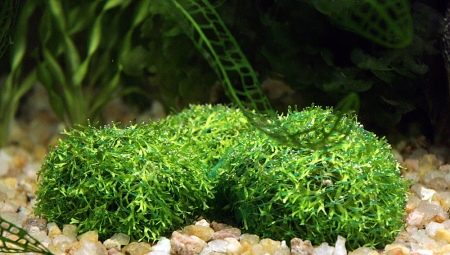Living conditions in modern cities have alienated man from nature as much as possible. In order to enjoy the greenery and the aroma of fields and forests, look at the azure expanse of water bodies, people need to travel hundreds of kilometers outside the city.
The lack of communication with wildlife makes the townspeople get pets, grow indoor plants. Due to the lack of free time, not all animal lovers can afford to have a pet. Experts recommend paying attention to aquariums with fish that require a minimum amount of attention, but bring no less joy and positive emotions to the owners.
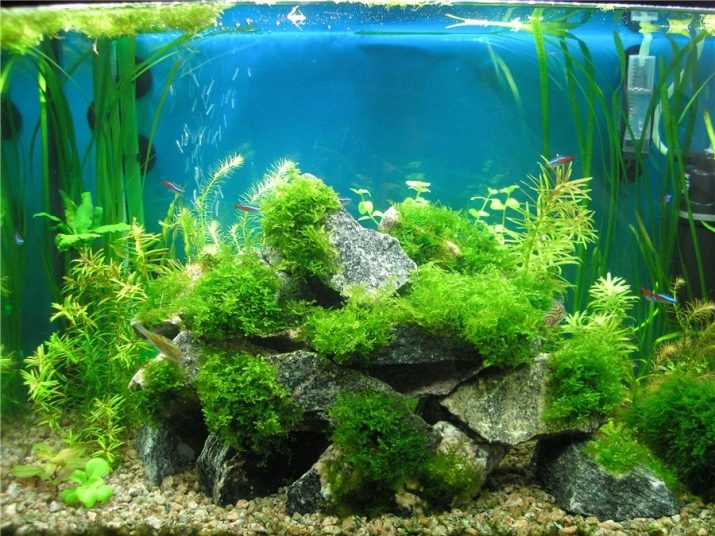
In specialized stores you can buy everything you need for a home reservoir from fish to decorative moss, without which it is impossible to imagine a single aquarium. Professional aquarists recommend paying attention to riccia.
Description
Floating richia is an aquarium plant that belongs to the family of liver mosses and does not have standard stems and roots. Under natural conditions, this species can be found in regions with a subtropical, tropical and temperate climate. The most favorable habitat is stagnant fresh water. The appearance of the plant resembles small green lumps consisting of thin thalli filled with air.
The width of one stem does not exceed 1 mm. Long-term research has given scientists reason to believe that this species came from brown and green algae that were on land.
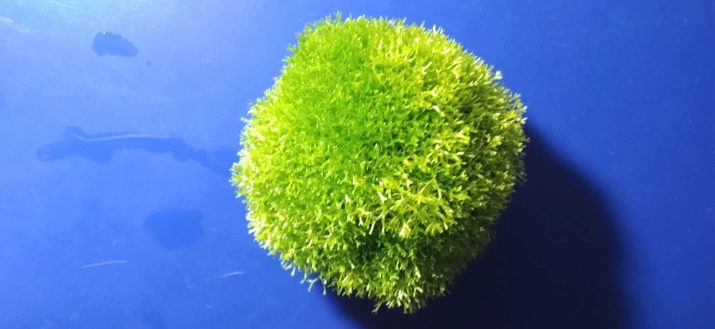
Due to the presence of a large number of air chambers, moss can constantly be on the surface of the reservoir. The height of the green carpet can reach up to 30 mm. The green lawn looks very impressive and is of great importance for the aquarium. It feeds on riccia with the help of rhizoids resembling thin threads.
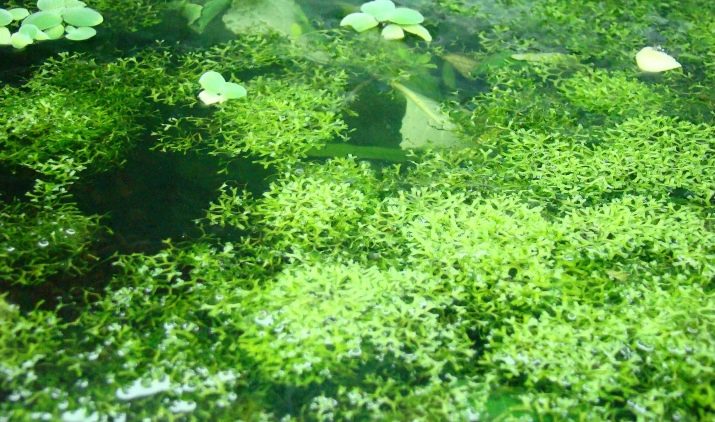
Often this organ helps the plant to fix itself near the protruding parts of the aquarium.
Despite its unpretentiousness and ease of care, this moss does not tolerate the proximity to duckweed. The most comfortable neighbors are the following plants:
- echinodorus;
- lileopsis;
- hemianthus;
- micrantemoid;
- eleocharis.
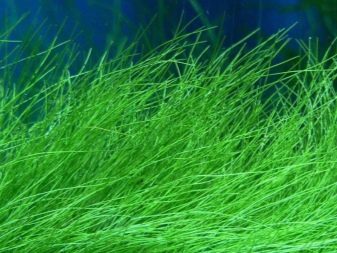
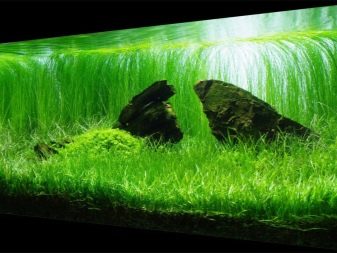
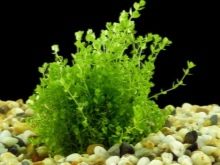
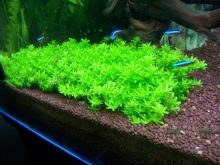
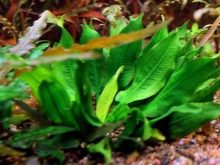
Benefit and harm
Professional aquarists recommend paying special attention to this plant, the benefits of which for a home reservoir can hardly be overestimated:
- natural enrichment of water with oxygen particles;
- aesthetic decoration of the reservoir;
- carbon dioxide recovery;
- purification of water from fish residues;
- the creation of secluded places for small fish and shrimp;
- the formation of a darkened and comfortable space for fish;
- restraining excessive algae growth;
- helping young plants to adapt;
- creating the necessary mineral and organic balance;
- acting as a building material for nests of labyrinth fish;
- providing natural food for turtles, ampoules and crustaceans;
- accelerated development and reproduction of ciliates, which are an indispensable food for fry.
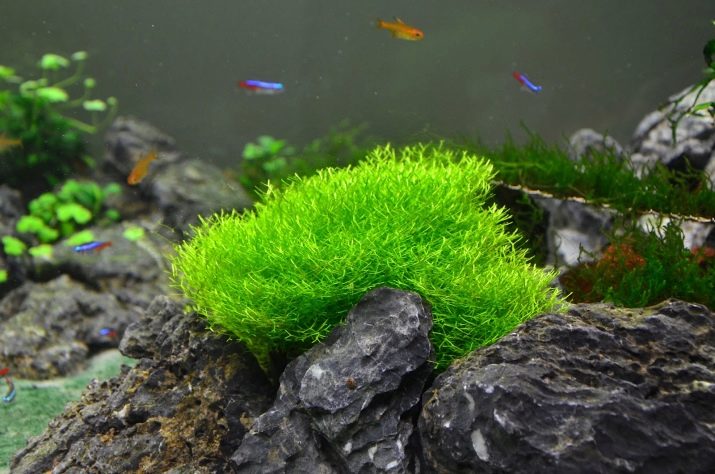
The color and structure of richia can quickly and accurately determine the state of flora and fauna in an artificial reservoir. If the basic parameters and indicators are not violated in the aquarium, the moss has a rich green tint, while the presence of brown, dark and red spots indicates the need to check the condition of the home reservoir to prevent the death of its living inhabitants.
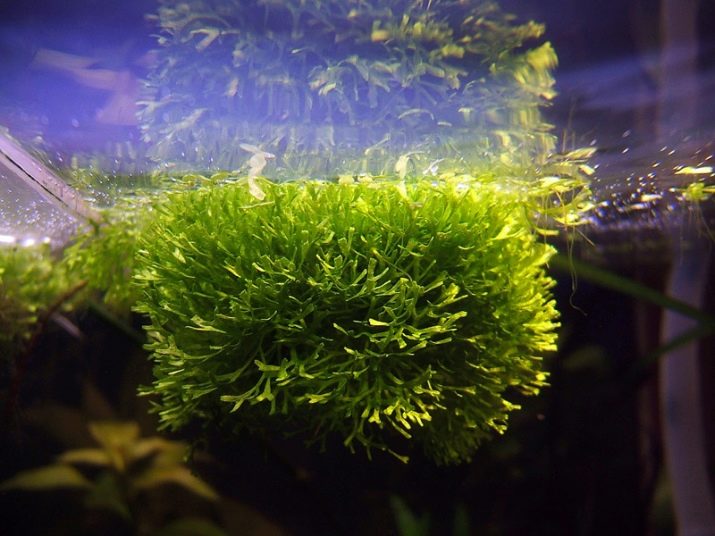
To increase the level of benefits, florists recommend that after cutting the bushes not to throw away the cut pieces, but to dry them. From these raw materials it is possible to form nutritious balls, which the inhabitants of the reservoir will be happy to feed.
Despite the huge number of positive properties of richia, experts recommend paying attention to its negative aspects:
- intolerance to salt water;
- the need for regular weeding and haircuts;
- pollution of the reservoir by decomposed organic objects that get stuck between the stems;
- the absorption of a large amount of oxygen at night;
- high breeding rate;
- unwanted cultivation in the same pond with goldfish that quickly eat this moss.
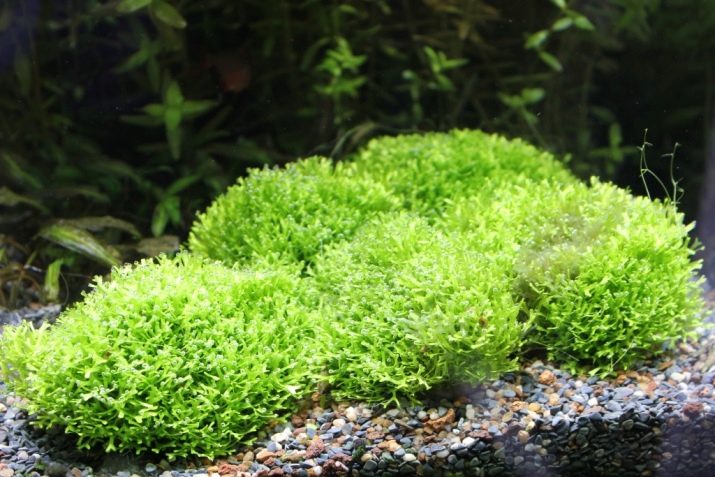
To reduce the polluting effect of stuck and decomposed organisms, experts recommend placing green islands at the maximum distance from the fish feeding zone.
Kinds
In the natural habitat, there are a large number of species of sand moss, but the most common are only a few:
- Japanese;
- European;
- Thai
- Singaporean.
For artificial landscaping home aquariums florists recommend using only the Japanese look, which happens to be floating or sinking.
- Floating moss located in the upper water layers due to the high level of oxygen particles in the stems. The maximum distance between branches of this species does not exceed 10 mm.
- Sinking (Amano) - a plant whose habitat is the bottom of the aquarium. The distance between thalli can be more than 30 mm.

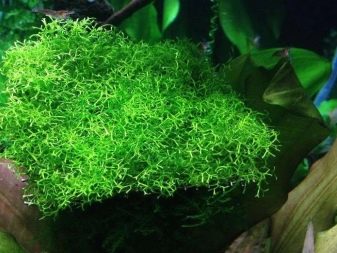
Conditions for keeping
Despite its unpretentiousness and undemanding conditions of detention, water moss needs a certain amount of attention to itself. The temperature level of the water must be constantly in the range of +22 degrees to +28 degrees Celsius.
Water hardness must not exceed 7 dGHand acidity - 8 pH. The use of aeration and filtration systems in the habitat of riccia is optional.
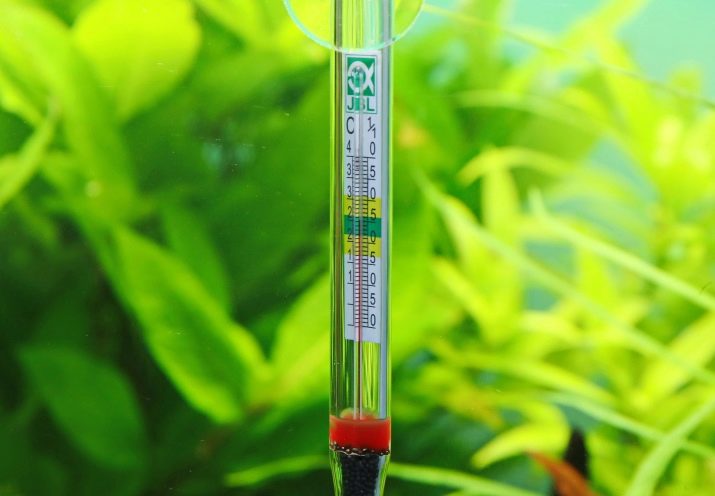
Due to the high rate of plant propagation, experts do not recommend the use of containers whose volume is less than 10 liters.
When growing an aquatic plant special attention must be paid to lighting, which should be bright and located on top. When choosing a lighting device, it is better to give preference to day lamps, but it is better to refuse incandescent lamps due to the fact that they emit a large amount of heat and can provoke a significant increase in water temperature. The optimum distance between the water and the lamp is 10-15 cm. A low level of illumination can provoke not only stratification of the stems, but also their decay.
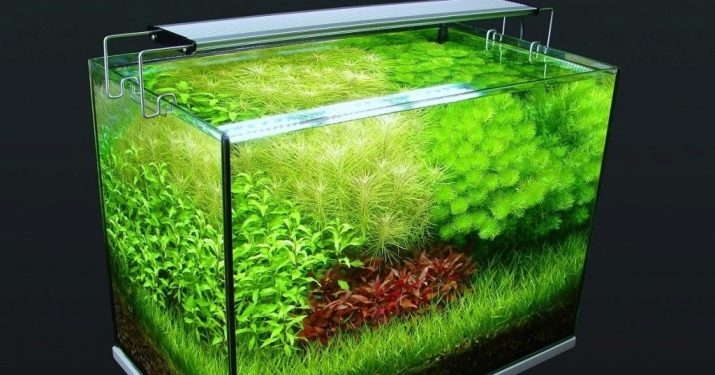
To maintain a beautiful and spectacular appearance, florists recommend conduct regular thinning of green spaces. Thickly growing thickets not only look ugly, but also make it difficult for light and oxygen to enter the reservoir. Moss, located on the surface of the aquarium, does not need additional use of special mineral complexes, but plants at the bottom of the aquarium need fertilizing with fertilizers and carbon dioxide.
If the cultivation rules are not followed, as well as if the content parameters are violated, you may encounter the following problems:
- lack of growth - low temperature conditions, which can subsequently provoke the death of the plant;
- disintegration of thalli - non-observance of lighting rules;
- the disappearance of shrubs and their eating - the presence of a large number in the pond of turtles and ampoules.
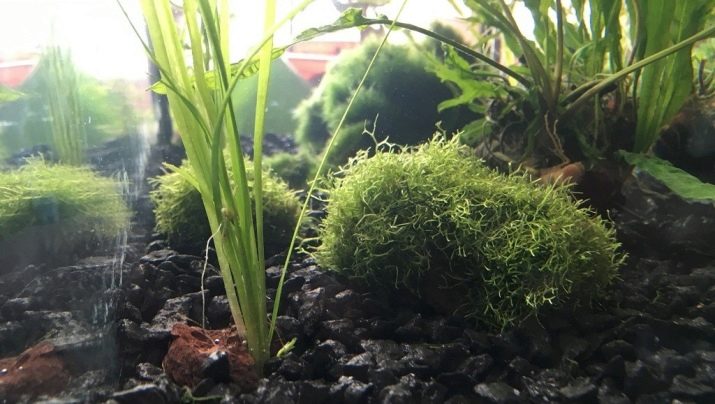
How does it breed?
The breeding technology of richia is very simple and not laborious, therefore it can be used even by the most inexperienced aquarists. To get a young plant, you just need to separate a small bush from the mother bush and place it in a separate container with clean and settled water. Under favorable conditions for the growth and development of moss, after a month you can see a fully formed full-fledged plant.
Thanks to the vegetative method of propagation, a plant in a short period of time can fill all the surrounding space. And small pieces of moss, torn from the main bush, can with the help of water flows move to a new place and already there form young green thickets.
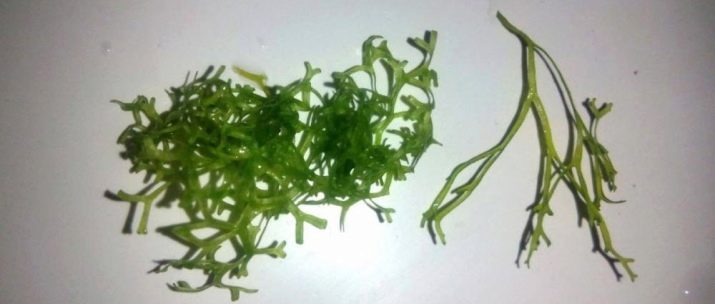
You can save the population of this plant even in conditions of complete drying of the aquarium. Under extreme conditions, moss forms spores, which, when water appears, begin to actively develop and form new green islands.
To accelerate the formation and growth of new bushes, experts recommend covering the aquarium with transparent glass, under which the most favorable conditions for moss will form.
How to fasten?
Moss looks very impressive and beautiful not only on the water surface, but also on the bottom. Attach the plant in the depths of the reservoir using the following devices:
- fishing lines or nets;
- stones and soil;
- snags;
- parts of a clay pot.
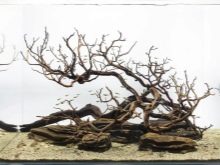
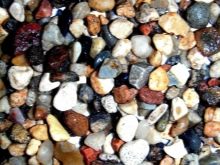
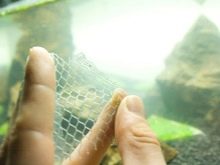
To fix the bush using a mesh it is necessary to cover the plant with a cellular material on top and place it at the bottom. As a mount, you can use pebbles, decorative stones and various branches. After some time, the moss will grow and fill all the cells of the grid.
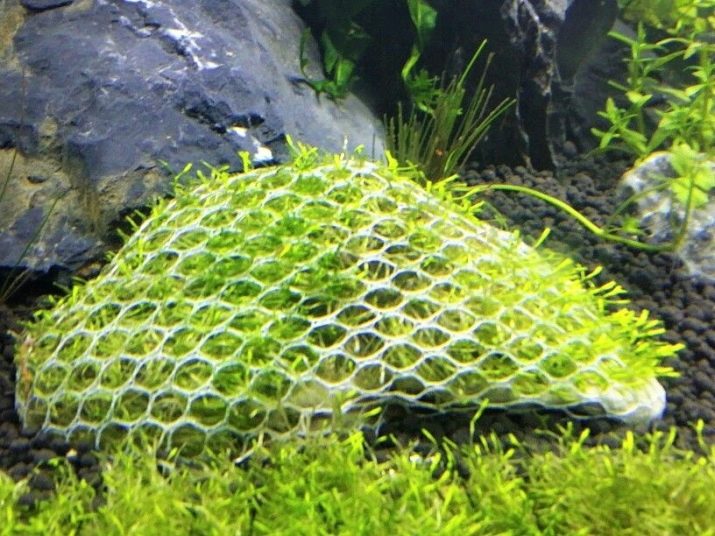
In the case of using fishing line to deepen moss, it is necessary to wrap it with the selected green lump and tie it in a favorite place. With this device, you can place the moss both vertically and horizontally.
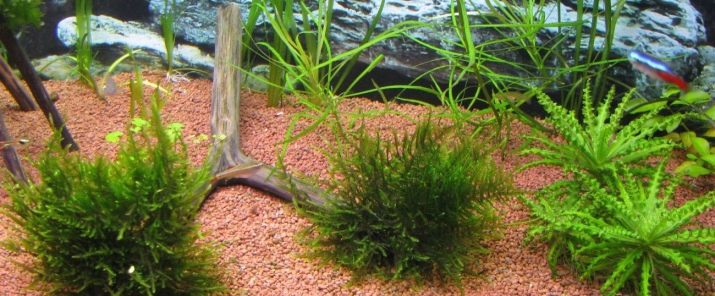
Despite the variety of options for fixing moss at the bottom, aquarium designers recommend to pay attention to the most aesthetically attractive way, consisting of several stages:
- selection of the necessary grid color and size;
- the formation of the mesh from the sleeve using fishing line;
- laying inside a made pocket of a flat stone or pebble;
- even distribution of richchia over the stone;
- fixing the open end of the mesh on the back of the stone base;
- removal of all protruding parts of the mesh pocket;
- placement of the structure on a selected section of the bottom.
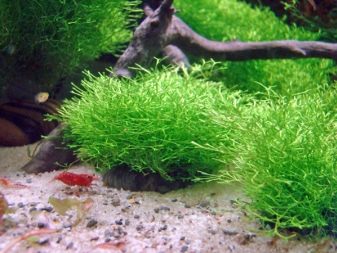
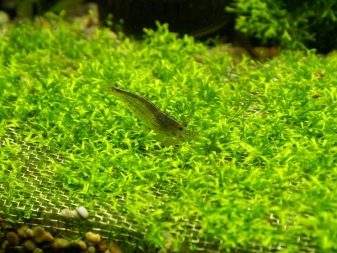
As a fastener for riccia, you can use any branches, snags and stones. Especially spectacular are green compositions in halves of clay pots and other decorative containers. If it is impossible to use all of the above methods, professional aquarists recommend simply sprinkling the edges of the green pillow with a small amount of soil.
In order to create an island of peace and tranquility in the house, psychologists recommend installing an aquarium with green algae, fish, turtles and crabs. A home pond can decorate not only private city apartments, but also educational and health institutions, offices and administrative buildings. Daily observation of the measured life of the underwater world will help get rid of stress, energy stress and emotional overload.
To create a beautiful and aesthetically pleasing aquarium it is not necessary to purchase expensive imported plants.
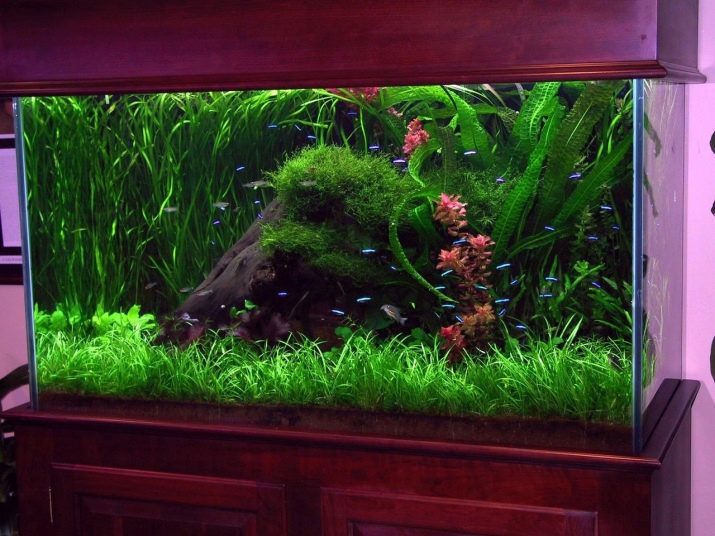
Beginning aquarists should pay attention to simple, affordable and easy-to-care green elements, one of which is water richia. An amazing plant will help to create beautiful compositions, care for which will not cause difficulties and financial costs.
The video below will tell about the landing of riccia.
